|
Developing
Organizational Knowledge Assets at our Communities of
Practices
| What
are CoPs ?
CoPs are ‘Groups of people who
share a set of problems, or a passion
about a topic and who deepen their knowledge
and expertise in this area by interacting
on an ongoing basis.’ - Wenger,
E., McDermott, R., & Synder, W.M.
Cultivating Communities of Practice:
A Guide to Managing Knowledge
A Social Learning System
A CoP is, in essence, a social learning
system that has proven to be an effective
way to manage knowledge. Of late, many
organizations have come to realize that
designing a knowledge base without a
clear domain or a coherent community
can easily produce a useless tool, as
demonstrated by the numerous databases,
built without involving a well-defined
community, that are now collecting digital
dust. |
Background
Paradigm, who has always
been a firm believer in customer engagements,
had decided to embark on cultivating Communities
of Practice (CoPs) for the information industry.
To-date, we have spearheaded multiple CoPs,
backed by the overwhelming responses of our
customers. Our knowledge acquisition model
to create, share and apply knowledge, has
evolved significantly to establish our own
‘CoP Framework’.
The CoP Management approach, supported by
Knowledge Acquisitions Process Tools, encompasses
a simple framework which describes a learning
cycle – before, during and after each
CoP event.
The lessons arising from that learning loop
are agreed and distilled by the ‘CoP–Peers’
across the organization who have
a stake in agreeing and defining organizational’s
best practices, and by selected Subject
Matter Experts from related organizations
who are able to share best practices.
Finally, the lessons – both specific
and generic are incorporated into "Knowledge
Assets" in the form of a formal
report that is disseminated among to the CoP
participants.
What are the characteristics
of and how to cultivate CoPs ?
Wenger (2006) had mentioned
that there are three elements that are crucial
in a CoP:
- The
domain: A community of practice
is not merely a club of friends or a network
of connections between people. It has an
identity defined by a shared domain of interest.
Membership therefore implies a commitment
to the domain, and therefore a
shared competence that distinguishes
members from other people.
- The
community: In pursuing their
interest in their domain, members engage
in joint activities and discussions, help
each other, and share information. They
build relationships that enable them to
learn from each other. A website in itself
is not a community of practice. Having the
same job or the same title does not make
for a community of practice unless members
interact and learn together.
- The
practice: A community of
practice is not merely a community of interest--people
who like certain kinds of movies, for instance.
Members of a community of practice are practitioners.
They develop a shared repertoire
of resources: experiences, stories, tools,
ways of addressing recurring problems—in
short a shared practice. This takes
time and sustained interaction.
It
is the combination of these critical elements
that constitutes a Community of Practice.
And it is by developing these three elements
in parallel that one cultivates such a Community.
How
can Communities of Practice be applied in
Learning Organizations?
Communities of practices have been around
for as long as human beings have learned together.
The concept of community of practice is influencing
theory and practice in many domains. From
humble beginnings in apprenticeship studies,
the concept was grabbed by businesses interested
in knowledge management and has progressively
found its way into other sectors.
The concept has been adopted most readily
by people in business because of the recognition
that knowledge is a critical asset
that needs to be managed strategically.
Initial efforts at managing knowledge had
focused on information systems with disappointing
results. Communities of Practice provided
a new approach, which focused on people and
on the social structures that enable them
to learn with and from each other.
Today Communities of Practice can be used
as a vehicle for developing strategic capabilities
in organizations:
From
this perspective, the knowledge of an organization
lives in a constellation of Communities of
Practice, each taking care of a specific aspect
of the competence that the organization needs.
Communities of Practice have now become the
foundation of a perspective on knowing and
learning that informs efforts to create learning
systems in various sectors and at various
levels of scale, from local communities, to
single organizations, partnerships, cities,
regions, and the entire world.
 |
OUR
CoPs |
 |
|
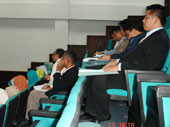 |
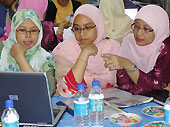 |
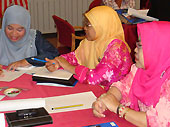 |
1st
CoP @ UMT - "Key Performance Indicators
for Librarians"
|
2nd
CoP @ UiTM - "Competency Skills
for Librarians"
|
3rd
CoP @ PPAPP - "Innovation in the
marketing of Information Services" |
| Key
Learnings: |
Key
Learnings: |
Key
Learnings: |
- What
are the Key Performance Indicators?
- Why
are Key Performance Indicators essential
in measuring performance?
- How
to successfully implement KPIs in
Libraries?
|
- The
importance of competencies
- Identified
the competencies needed for their
profession
- List
of competencies for librarians
|
- Learned
about various tools that can be used
to assess their environment
- Learned
to develop a marketing plan
- Produced
a list of innovative marketing strategies
|
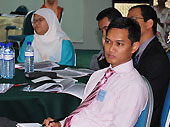 |
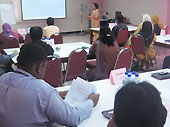 |
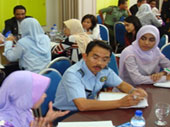 |
4th
CoP @ IIUM - "Pushing the Frontier
:From Information Management to Knowledge
Management "
|
5th
CoP @ UM - "From Information Management
to Knowledge Management: Developing
New Competencies for Librarians"
|
6th
CoP @ MINDEF - "Developing Intellectual
Capital through Knowledge Assets: Importance
of Knowledge Audit in KM" |
| Key
Learnings: |
Key
Learnings: |
Key
Learnings: |
- Indentified
the difference between IM & KM
(processes)
- Importance
of KM to the organization and industry
- Learned
how to capture tacit knowledge via
a Knowledge Cafe
|
- Importance
of KM to the organization and industry
- Identified
the competencies needed in KM
- Developed
a Competencies Gap Analysis (CGA)
for their organization
|
- Identified
knowledge assets in their organization
- How
knowledge assets in their organization
contribute to their organizational
knowledge
- Identified
competencies needed for a knowledge
audit
|
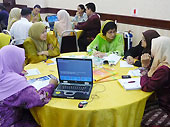 |
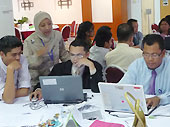 |
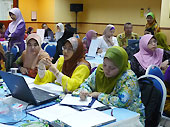 |
7th
CoP @ PNM - "Techniques in Marketing
Knowledge: Making Libraries More Competitive"
|
8th
CoP @ PPUKM - "From IM to KM: Providing
Knowledge-based Services for the Medical
Industry "
|
9th
CoP @ UiTM - "Core Competencies
for the Marketing of UiTM Library Services
and Facilities: Analysis and Evaluation" |
| Key
Learnings: |
Key
Learnings: |
Key
Learnings: |
- Identified
the different techniques to market
a library
- Fundamentals
of marketing knowledge
- Modern
marketing from the library's perspective
|
- Identified
critical success factors in knowledge
management
- How
do libraries assist in the creation
and development of a knowledge culture?
- Clinical
medical librarianship
|
- Identified
the core competencies needed to market
the services and facilities of a university
library
- How
do libraries support the university's
core businesses?
- Linking
marketing to strategic plans
|
Come.
Learn. Share.
Further reading
For the application of a community-based
approach to knowledge in organizations:
-
Cultivating communities of practice:
a guide to managing knowledge. By Etienne
Wenger, Richard McDermott, and William Snyder,
Harvard Business School Press, 2002.
-
Supporting communities of practice:
a survey of community-oriented technologies.
By Etienne Wenger. Self-published report
available at www.ewenger.com/tech,
2001.
For
in-depth coverage of the learning theory:
-
Communities of practice: learning, meaning,
and identity. By Etienne Wenger, Cambridge
University Press, 1998.
For
a vision of where the learning theory is going:
|
|